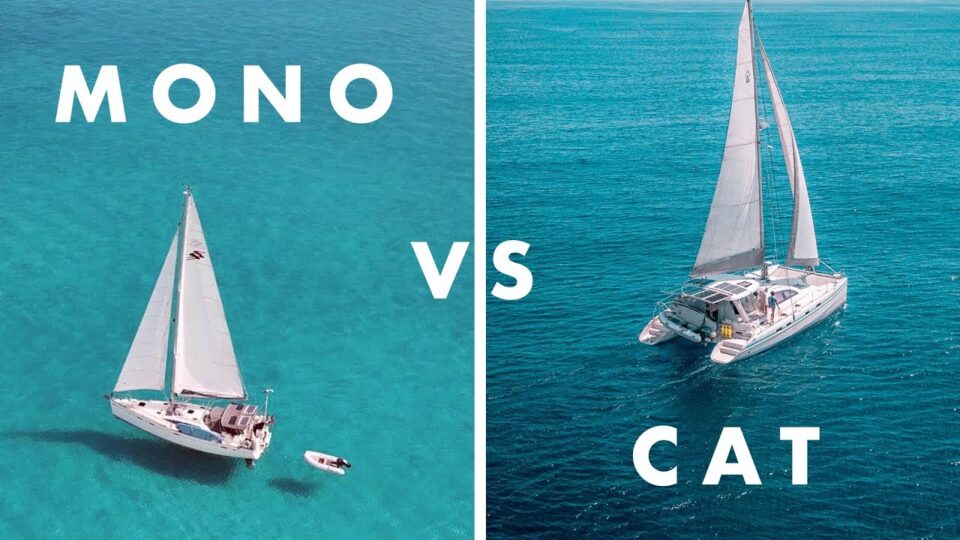Catamarans vs Monohulls: Which is Better a Better Sailboat For You?
The question of whether to choose a monohull vessel or a catamaran is an eternal dispute between boat lovers. These arguments are usually based on one’s preferences and philosophy. In fact, the popularity of catamarans has grown significantly since their design facilitates many aspects of sailing. But, both mono-hulls and multi-hulls have their advantages and disadvantages. So, in this article, I’m going to list some details about both cats and monohulls so as to help you understand which one is better for you. Remember it all depends on what sort of experience you are looking for. Keep reading!
What is a Monohull?
In general, boats float due to the fact that they displace more water than they weigh. The hull is in “displacement mode” while a boat is stationary or moving slowly. That is, all of the upward forces that keep it afloat come from flotation, which is achieved by displacing water. With certain hulls, increasing the boat’s speed beyond a particular point causes the hull to lift up and skim along on top of the water. This is referred to as “planning.” Monohulls can be divided into two types; displacement and planing hulls.
Some hulls are only capable of moving at displacement speeds. This style of boat has generally slow speed, but it is incredibly efficient to operate. While moving, most have a smooth motion, though rolling (side-to-side movement) might be an issue. On the other hand, while on the sea, achieving fast speeds requires a hull that can readily transition onto a plane. Flat bottom surfaces from amidships aft, or from the middle to the back of the bottom, and a flat transom, or the back of the hull, are the main characteristics of a planing hull. Keep in mind that at a sharp angle, the transom must contact the bottom.
What is a Catamaran?
Nowadays, catamarans are becoming more and more popular. They’re particularly appealing to fishermen since they combine high-speed performance and a smooth rough-water ride with a solid angling platform. Catamarans have two primary disadvantages. Firstly, they require twin engines. Also, larger catamarans may be too broad to fit into standard marina docks. Another disadvantage is that there is less usable interior space than on a monohull of comparable length.
The two hulls of a catamaran are known as amas. These days, the popular phrase is “sponson,” but ama is still acceptable. Note that in comparison to its entire length, each ama is quite short. The narrow amas of a catamaran travel quickly through the water with little power. This allows for fast speeds even when the amas aren’t actively planning.
Trimarans on the other hand have three separate hulls. Sailboat designers have successfully employed this design to provide a large central hull for cabins. But, also for two outrigger amas for stability. The trimaran concept hasn’t been used much in powerboats, despite the fact that several “cathedral” hulls are related. Instead of three independent hulls, a cathedral design squishes them together to the point that they often share a similar planing surface near the transom.
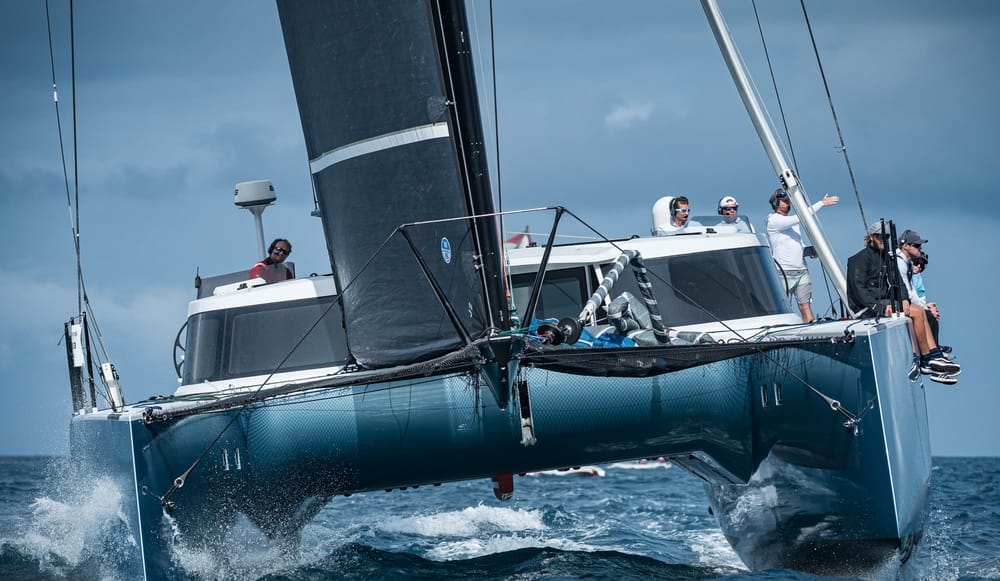
Monohull or Catamaran? Let’s Take a Look at Their Pros and Cons
Safety
Catamarans are unsinkable because they are incredibly stable and have natural buoyancy. Yes, they can capsize in a major accident. But, being rescued while floating on the water’s surface is preferable to plunging to the bottom in a monohull. Furthermore, moving around on a flat deck is far safer than on an angled deck.
Classicists have long claimed that catamarans are not as safe as their keelboat counterparts. However, this remark is now regarded as archaic. Since it dates from the mid-nineteenth century when the majority of catamarans were made by amateurs. They could readily tip over even in calm weather, especially if one of their bodies became leakproof owing to damage. Sinking is extremely difficult, if not impossible, for a well-built modern catamaran. Modern structures are designed using computer simulations of various water conditions. Bear in mind that the maximum potential safe sail area is available to cruisers and charter possibilities in particular.
Monohulls, particularly sailboats, offer significantly stronger “self-righting” capabilities in the event of a worst-case knockdown situation. In a catamaran, once you’re upside down, you’re stuck there…And, who wants to be upside down in the middle of the ocean? Returning to an upright position gives you complete access to onboard safety equipment. This includes a liferaft, dinghy, flotation devices, EPIRBs, and strobe lights, which can save you if the boat sinks.
Speed
Generally, a catamaran’s high speed allows it to avoid adverse weather. While catamarans do not point as high into the wind as monohulls they are around 20% faster. Or, if they do, they create more leeway or slide sideways. This means that even if you sail upwind at a slightly broader angle to the wind than a monohull and cover a more distance, you will arrive at your destination sooner than a monohull.
A modern performance catamaran with daggerboards and strong sails may point as high as a monohull of comparable size. It will point similar to a comparable monohull but will sail far faster. This allows it to reach an upwind position far sooner than a monohull. However, it’s worth noting that the majority of production cats on the market are underpowered and have standard smaller sails. Many of these designs perform poorly in light breezes. Unless they’re equipped with larger headsails, a Code Zero, and a square-top mainsail.
While cats are more comfortable and safer in rough weather, we must admit that if the weather gets extremely terrible (60 knots of wind or more), it’s better to be on a monohull for survival reasons. For serious offshore single-handed sailing, I believe a monohull is superior since it is easier to hove-to in it. Bear in mind that when you’re in a cat during severe storms you won’t feel any danger, but it demands some nifty seamanship. And, keep in mind that even though a monohull can capsize in bad weather or even roll in a storm, they usually right themselves. A catamaran, on the other hand, is incapable of self-righting. However, the cat will usually stay afloat, providing a safe haven to wait out until aid arrives. Modern catamarans, on the other hand, are extremely difficult to capsize.
That being said, most catamarans can travel 200 to 250 miles per day, and with contemporary technology allowing one to control weather, it’s difficult not to deal with bad weather. In many circumstances, a faster boat is a safer boat because it can outrun heavy weather. A catamaran can avoid the worst weather and, at worst, put itself in the best position to avoid the brunt of a storm if there’s good weather routing information.
So, to sum up, cruising catamarans are quicker than monohulls, and sailing catamarans, depending on their angle, can sail at half the speed of the wind. It’s great to be on a boat that can swiftly attain high speeds and get you to your destination safely and on time. However, catamarans are faster because of their lower surface area, but their prices are generally higher than those of monohulls. Instead of fighting the elements, monohull designs operate in harmony with them. In addition, keep in mind that when sailing upwind, sailing catamarans are inefficient and tack slowly.
Fuel Consumption
Do you want to save money on gas? Then, in most cases, catamarans have less fuel consumption than monohull boats. Catamarans save a lot of gasoline since they have a less wetted surface area on their hulls. They can propel the boat with just one engine in weak winds. Also in flat water, and if the engines have the same number and horsepower. However, in heavier weather, where the higher efficiency of a monohull design provides less resistance, this is not the case.
Generally, catamarans have two fuel-burning engines, which can raise fuel expenses. However, because a catamaran is lighter on the water, it requires less energy to move. In a catamaran, you’ll use less fuel than you would in a monohull. Furthermore, in low-wind areas, catamarans might choose to use only one engine. This reduces the amount of fuel consumed by a catamaran even more. But, only calm waters are subject to these laws. A monohull is far more efficient than a catamaran in navigating waters with heavy waves and heavy winds. A monohull will consume less fuel than a catamaran in this situation.
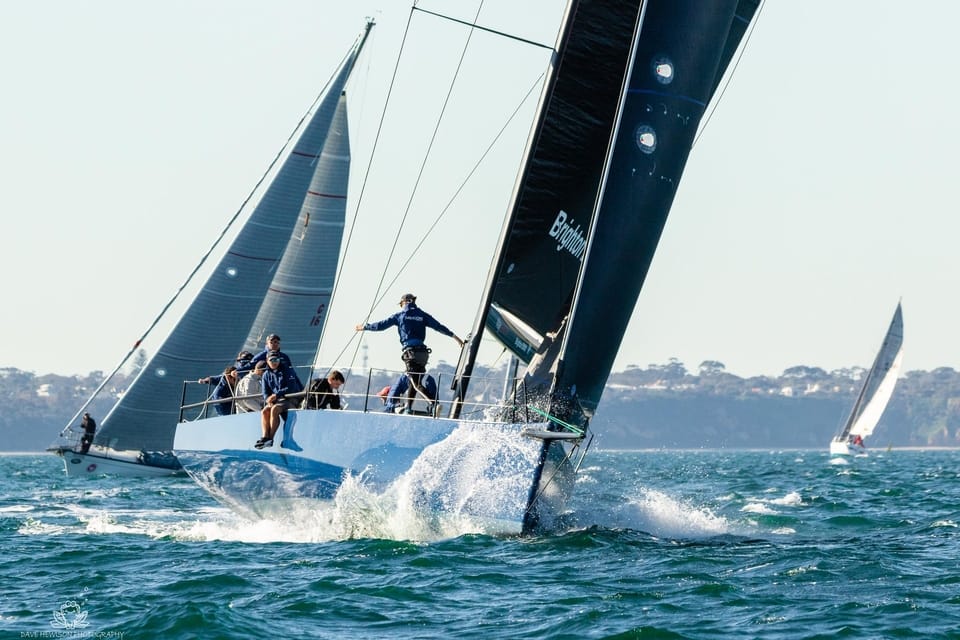
Layout
The best feature of catamarans is that all of the rooms are on the same level. The four-cabin arrangement is common with sailing cats and is popular among charter companies. Owner versions usually feature three staterooms, with one hull serving as a big cabin for entertaining. Most catamarans have a big central living room with not one, but two narrow staircases leading down into the hulls—one on each side. It’s a little like living in a tube in the hulls. They’re too thin to accommodate walkaround double/queen berths like those found in monohulls. But, in case of an emergency, it would be impossible to communicate with someone in the opposite hull.
Obviously, a monohull has less space than a catamaran. This is due to the fact that a cat is broader and has a larger deck surface. It also has twice as many hulls as the other, giving you greater total space between them. People who want to host parties on their boats will appreciate the extra space. The catamaran is usually the party boat of choice at the docks, according to most boat owners. Even if you don’t like to host parties, the extra room might be useful for lounging on the balcony or tanning. The boat’s large open space also makes it simple to utilize as a fishing platform.
You also have more room for equipment like surfboards, rafts, and other equipment that can easily clutter a monohull’s deck. Even fishing from a catamaran can be easier because the deck allows for plenty of space between anglers. Owners of catamarans also have more room for carrying fresh water and installing generators and solar panels. A catamaran’s interior room is often larger, and in luxury catamarans, it’s easier to install heavy appliances like washers and dryers inside. These can be fitted to larger monohulls as well, though it will be more difficult than on a catamaran.
All of the extra space, on the other hand, means the catamaran owner has more room to maintain and clean. Furthermore, all of the other stuff that can be brought into the boat will add to its weight. And, as well all know, a heavier boat will consume more fuel and move at a slower speed.
Maneuverability
With their twin motors, catamarans are incredibly agile. On a catamaran, the engines are widely apart, making navigating more easier and more precise than on a monohull, unless the monohull incorporates a bow thruster. Most of the time, a bow thruster isn’t required because the engines are around 20 feet apart. When there’s no bow thruster (as do few monohulls) you have to rely on prop-walk and prop wash on the rudder. On her own axis, a contemporary catamaran can turn 360 degrees. A monohull would be unable to accomplish this while it has a larger turning circle.
A monohull under sail, on the other hand, is far more maneuverable and will tack much faster than a catamaran. But, the ease of movement under motor on a catamaran, especially in close quarters, is substantially superior. They also feature shallow drafts, allowing you to maneuver into areas that a monohull cannot, as well as anchor closer to shore. However, monohulls are more maneuverable as you don’t have to deal with two hulls. They can make sharper turns and travel through small channels and small areas easier than cats. In addition, their hull displacements lessen the negative impacts of crosswinds in confined spaces.
Anchoring and Docking
While docking a catamaran is simple, its big size makes it difficult to fit into a standard slip. However, with some skill and good planning, finding room should be no problem. You may even anchor or moor the boat and dock it with the dinghy, which is much easier than a monohull. However, keep in mind that in most cases docking, hauling, and slipping a monohull is significantly easier, takes up less room, and is far less expensive.
Moreover, docking a catamaran can be a challenging task. This is due to the fact that catamarans are frequently too wide to dock in the marina’s core regions. As a result, they must be docked at the far end of the dock. Therefore they have fewer docking options and raise the cost of docking. Owners of catamarans sailing through places where there aren’t many catamarans may find it difficult to find a dock at all. This is especially true in the northern Atlantic, where monohulls outnumber catamarans.
Keep in mind that one of the most significant advantages of a sailing multihull is its stability. Not only at sea, when heeling simply does not – or should not – occur to any significant extent, but also at anchor. It also greatly expands one’s anchorage options to include areas influenced by the swell. This is quite common in the Caribbean, where a slight shift in wind direction may make a previously flat, quiet anchorage intolerable in a monohull. In addition, its fairly shoal draught expands the options even more.
Catamarans have a large platform, making them ideal for relaxing at anchor without the rolling motion that monohulls are prone to in a swell. Many monohull sailors had to leave anchorages because of the uncomfortable anchoring. This is because large rollers or swells entering an anchorage can make the situation extremely uncomfortable and dangerous.
Also, a bridle is tied to both bows and down to the anchor chain on catamarans, resulting in a fairly secure position at anchor. In heavy winds, many monohulls tend to sail at anchor since the bow acted as a sail (due to the high freeboard). They sail in one direction until the chain snatches, then tack across and sail in the opposite direction, almost completely dislodging the anchor. The catamaran, on the other hand, is much more stable at anchor and does not sway as much.
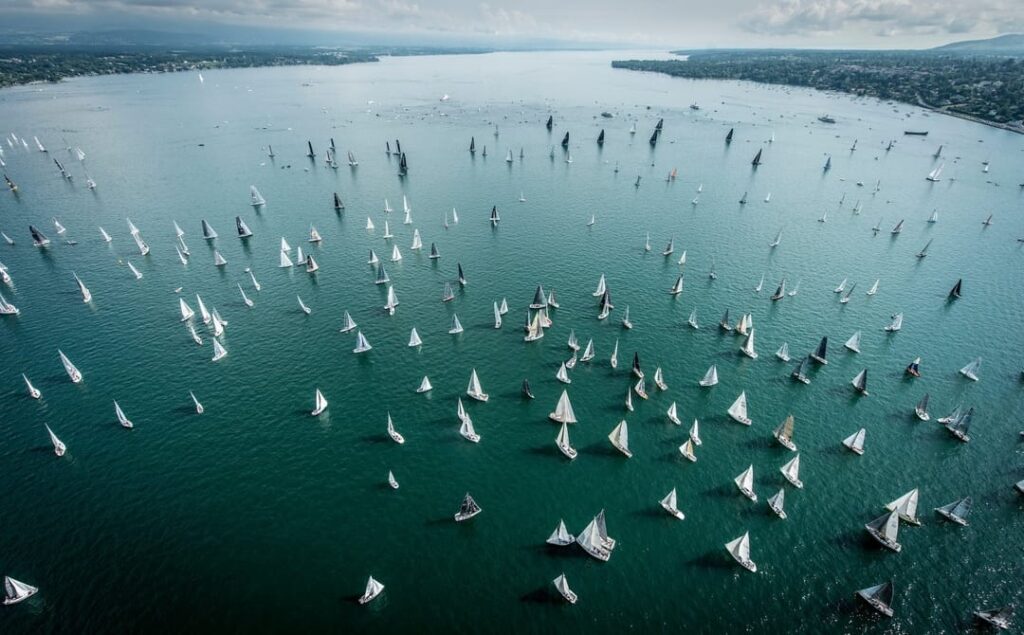
Sailing Abilities
Most cruising multihulls won’t point like a monohull with a deeper keel upwind, and the motion may be rather unpleasant when sailing in rough weather. You must also keep a close eye on the sail area, but we’ll analyze this further below.
Moreover, catamarans are not suitable for racing and sailing sports. They can be fantastic for a holiday or even living aboard, but most racers would never buy one because of the stability. There is no sense of wind, waves, flying, or the boat itself on a catamaran. It’s quite tough to tell when it’s time to reef. While this can be done by feel on a monohull, there is specific instruction for catamarans as to what winds the sail area should be reduced.
When sailing to higher latitudes, like the North Atlantic, then a monohull would be a better solution than a catamaran. Residential areas are easy to heat and keep warm, and traditional metal may even melt thin ice. The contrary is true in the tropical zone, where huge catamaran salons would be unbeatable.
Monohulls can sail higher into the wind than most catamarans due to their keel. Daggerboards, which serve the same role as a keel and boost windward performance significantly, are common in some catamarans. However, daggerboards are not seen on 95 percent of cruising cats (those available for charter). Also, a monohull will be much easier to tack than a catamaran and glide lightly through the water. Moreover, in rougher seas, certain catamarans experience an annoying slapping of water on the bridge decks. A monohull responds to the helm more quickly than a multihull (in other words, they turn faster). This is due to the fact that most cruising cats have small “spade rudders” whose depth is dictated by the need for a modest draft. While with a keel, a monohull can have a more responsive rudder for its draft.
Monohull spreaders are 90 degrees to the mast, however, catamaran spreaders must be backswept. The reason for this is that a monohull has a backstay, and by combining it with the intermediates, you can achieve a lovely pre-bend in the mast. Keep in mind that the pre-bend is to flatten out the mainsail and allow for better performance.
Also, in order to pre-bend the mast on a catamaran without a backstay, you’ll have to utilize the backswept spreaders and diamonds. The reason I bring this up is that if you want to broad reach or run on a catamaran, you can’t let the mainsail out all the way because the backswept spreader tips could puncture the cloth. Because the spreaders on a monohull are at 90 degrees, you can let the main and boom out much wider, which is obviously more effective. This is one of the reasons why a catamaran should broad reach and tack downwind.
Maintenance
Because catamarans have two of everything, there is a clear trade-off between maintenance costs, reliability, and redundancy. One of the most significant advantages of having two of everything is that you have a backup. As a result, even if one component fails, you can typically still utilize the boat, such as running on one engine while the other fails. While redundancy is fine, lower maintenance and repair costs are generally preferable. Although having two of everything provides you some redundancy, I doubt you’ll want to take the boat out if one of the two hulls “fails.” Of course, this means two hulls to clean and antifoul, double the engine maintenance, and so on, but having two of the important pieces of equipment, such as engines, outweighs the disadvantages.
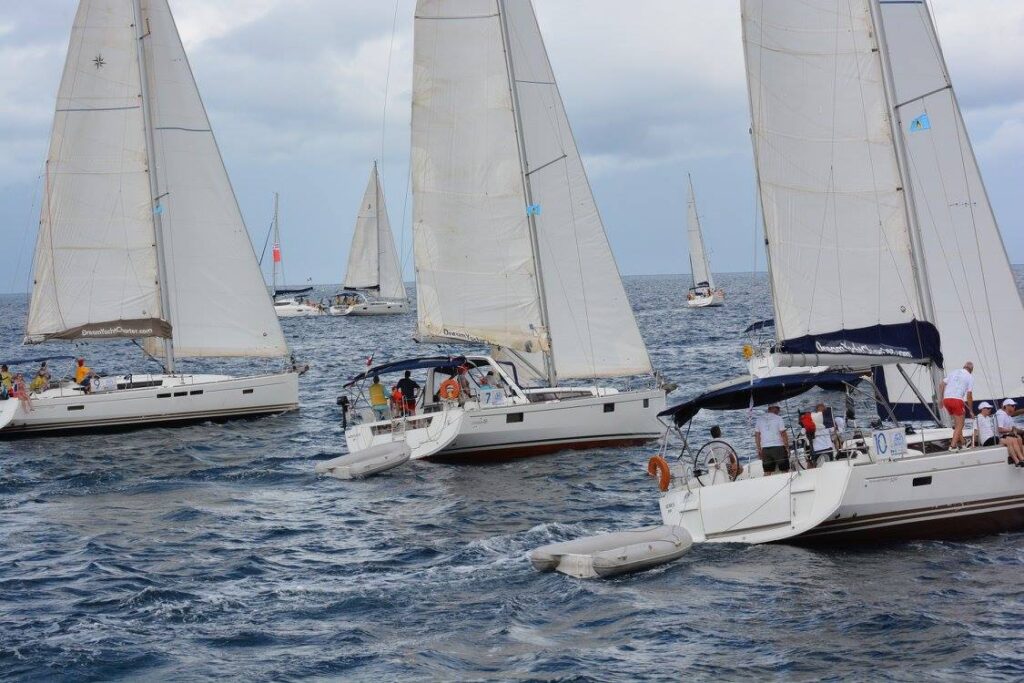
Stability
Due to their weight-bearing, catamarans have minimal to no heeling and do not roll at anchor. With sudden gusts, heeling on a monohull can be dangerous and uncomfortable, not to mention seasickness. Again, the trade-off is a noisy ride and fast movement, which many people find uncomfortable in bad weather. However, the heeling action of a monohull sailboat offers stability, spills wind from the sails, and provides safety.
Catamarans, unlike monohulls, do not have ballast in their keels, therefore they rely on beam and buoyancy for stability. Typical cruising catamarans have a beam-to-length ratio of around 50%, while several modern designs exceed this figure. A 45-foot catamaran will be around 22 feet wide, offering a highly solid sailing platform. Monohulls, unlike catamarans, cannot overcome rolling and pitching because of their narrow beam and lead ballast.
Rolling and pitching on a monohull while underway is quite dangerous. But, walking around on the deck of a catamaran while underway is easier because the boat is considerably more stable and does not heel. Sail adjustments and reefing are also significantly easier and safer for the crew as a result of this. The risk of falling overboard on a catamaran is far lower than on a monohull because of the rolling and pitching motion.
Cost
Generally, buying a catamaran is substantially more expensive than a monohull. So, if you opt for a cat you should also consider your budget before even starting your research. Pre-owned monohulls, on the other hand, are extremely inexpensive to purchase due to a current supply that considerably outnumbers the demand.
Nowadays, catamarans are in high demand, and they normally keep their worth far better and longer than other types of boats. And that’s why the market is currently centered to manufacture lots of them. Bear in mind that looking for a catamaran under $250,000 your options will be limited, and finding a catamaran under $100,000 is nearly difficult. Unless you opt with older boats like the Prouts or the less priced Geminis, a monohull is your best bet in this instance.
The cost of a cat rises if you need at least two of everything. But, keep in mind that due to their popularity, catamarans have a high resale value and a low depreciation rate, and they normally sell faster than monohulls. Due to the fact that most catamarans are not made in the United States, delivery expenses must be considered when purchasing the boat. Multihulls are becoming more popular, and as a result of the increased demand, they command greater prices in both the new and brokerage markets. Lastly, when considering a purchase, keep in mind that maintenance costs are substantially higher than on a monohull.
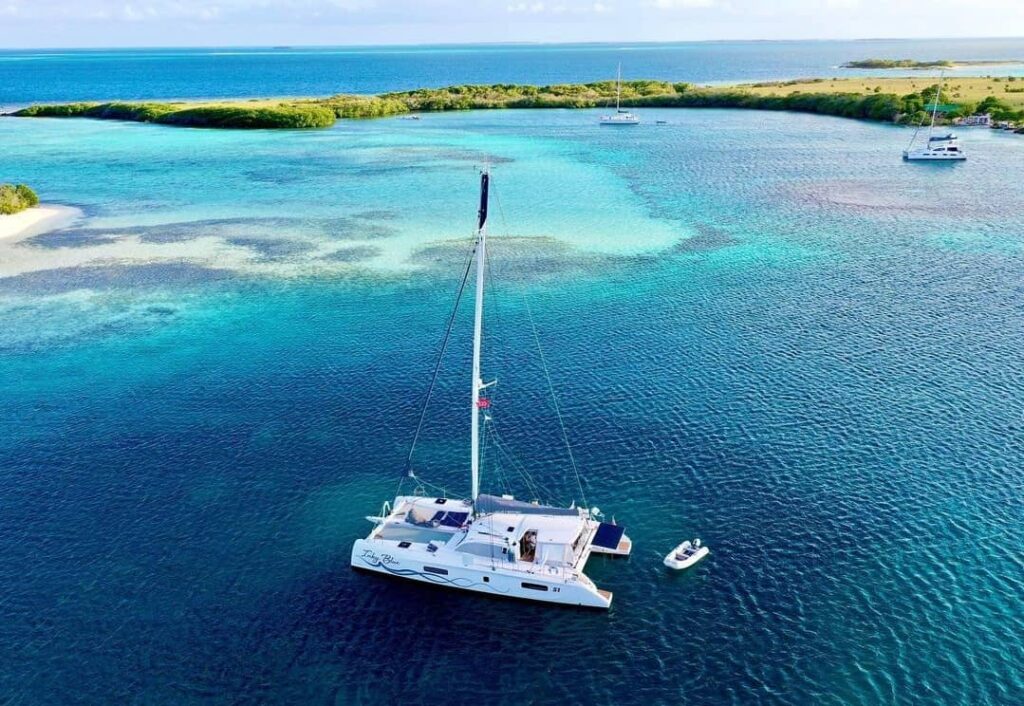
Catamarans vs Monohulls – The Bottom Line
So, this is it! We’ve come to the end of this highly discussed topic among sailors. Obviously, everything would be determined by two basic factors: personal preferences and budget considerations. Both monohulls and multihulls have their pros and cons and it’s totally up to you to decide which one suits you best. Because the two types of vessels provide such a different experience, it is highly recommended that you rent and test each one before purchasing to compare everything. In any event, it’s reasonable to say that a catamaran is an excellent choice for a charter, if not for purchase. Despite its high price, it provides comfort, space, and stability but you have a better overall sailing experience with a monohull. So, I hope that this article will help you make the right choice according to your needs. I wish you good luck with your research!
